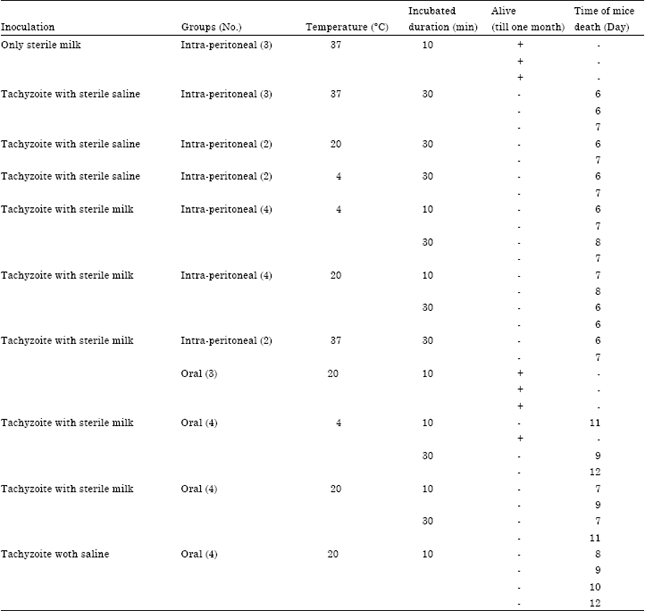Short Communication
The Viability and Infectivity of Toxoplasma gondii Tachyzoites in Dairy Products undergoing Food Processing
Department of Parasitology and Mycology, Shiraz University of Medical Sciences, Shiraz, Iran
D. Mehrabani
Stem Cell and Transgenic Technology Research Center, Shiraz University of Medical Sciences, Shiraz, Iran
LiveDNA: 98.4810
M.H. Motazedian
Department of Parasitology and Mycology, Shiraz University of Medical Sciences, Shiraz, Iran
M. Kalantari
Department of Parasitology and Mycology, Shiraz University of Medical Sciences, Shiraz, Iran
J. Nouroozi
Department of Parasitology and Mycology, Shiraz University of Medical Sciences, Shiraz, Iran
S.J. Adnani Sadati
Department of Parasitology and Mycology, Shiraz University of Medical Sciences, Shiraz, Iran









